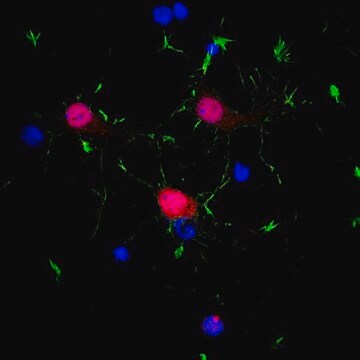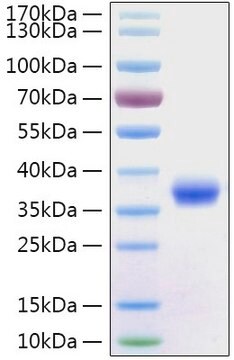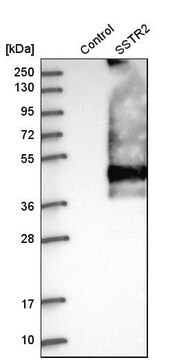AP132B
Anticorpo di capra anti-IgG di coniglio, coniugato con biotina-SP
Chemicon®, from goat
About This Item
Prodotti consigliati
Origine biologica
goat
Livello qualitativo
Coniugato
biotin conjugate
Forma dell’anticorpo
affinity purified immunoglobulin
Tipo di anticorpo
secondary antibodies
Clone
polyclonal
Reattività contro le specie
rabbit
Produttore/marchio commerciale
Chemicon®
tecniche
ELISA: suitable
western blot: suitable
Condizioni di spedizione
wet ice
modifica post-traduzionali bersaglio
unmodified
Descrizione generale
Applicazioni
Anticorpi secondari & di controllo
Western blotting con streptavidina coniugata a un enzima: 1:10.000-1:100.000.
Immunoistochimica: 1:500-1:5.000
Citometria a flusso: 1:200-1:1.000
Immunoisto/citochimica in fluorescenza: 1:200-1:1.000
Sarà cura dell′utente finale stabilire le diluizioni finali ottimali.
Anticorpi secondari contro immunoglobuline intere
Stato fisico
aggiungere acqua distillata sterile fino ad ottenere il volume indicato sull'etichetta della provetta.
Stoccaggio e stabilità
AVVERTENZE:
Esclusivamente per uso di ricerca; non per uso diagnostico.
Note legali
Esclusione di responsabilità
Non trovi il prodotto giusto?
Prova il nostro Motore di ricerca dei prodotti.
Avvertenze
Warning
Indicazioni di pericolo
Consigli di prudenza
Classi di pericolo
Acute Tox. 4 Dermal - Acute Tox. 4 Inhalation - Acute Tox. 4 Oral - Aquatic Chronic 3
Codice della classe di stoccaggio
13 - Non Combustible Solids
Classe di pericolosità dell'acqua (WGK)
WGK 3
Punto d’infiammabilità (°F)
Not applicable
Punto d’infiammabilità (°C)
Not applicable
Certificati d'analisi (COA)
Cerca il Certificati d'analisi (COA) digitando il numero di lotto/batch corrispondente. I numeri di lotto o di batch sono stampati sull'etichetta dei prodotti dopo la parola ‘Lotto’ o ‘Batch’.
Possiedi già questo prodotto?
I documenti relativi ai prodotti acquistati recentemente sono disponibili nell’Archivio dei documenti.
Il team dei nostri ricercatori vanta grande esperienza in tutte le aree della ricerca quali Life Science, scienza dei materiali, sintesi chimica, cromatografia, discipline analitiche, ecc..
Contatta l'Assistenza Tecnica.








